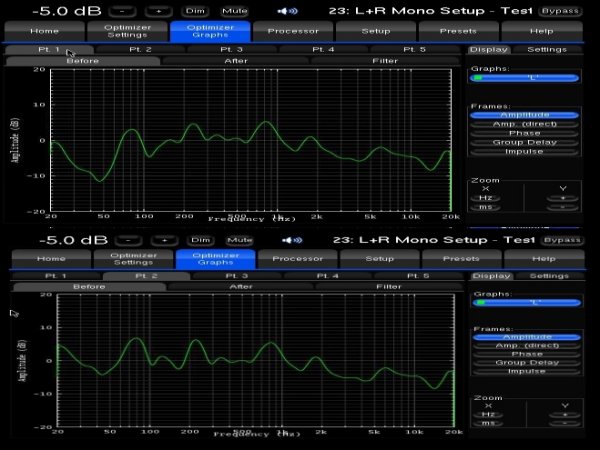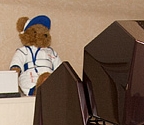Empircal evidence - Bass traps work!
So I decided to do a little bass trapping expirement. First, I measured my room without bass traps. Next I left the entire measurement setup untouched, installed floor to bottom traps (an 8 feet stack of 24 x 24 x 34 triangular cut up corning 703 in each corner), and redid the measurement. The difference was so dramatic I first though I made a mistake in my setup. Doublechecked everything but the difference was real. I used the Trinnov for measurement. Since Trinnov only does one channel at a time, I split on channel with a Y-splitter and what shows at Left channel on the chart is actually left and right.
This chart is without the trap. I was a little shocked about the huge dip around 50Hz. Note that this was measured with only the botttom woofer on the Evolution Acoustics engaged.
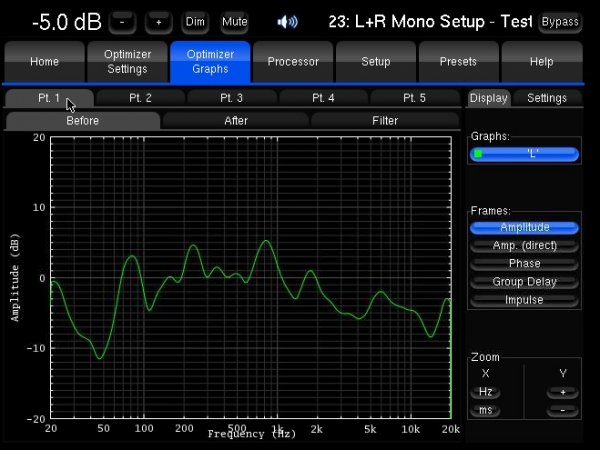
Next, I dumped all this corning 703 in the corner (I will build a frame with fabric later):
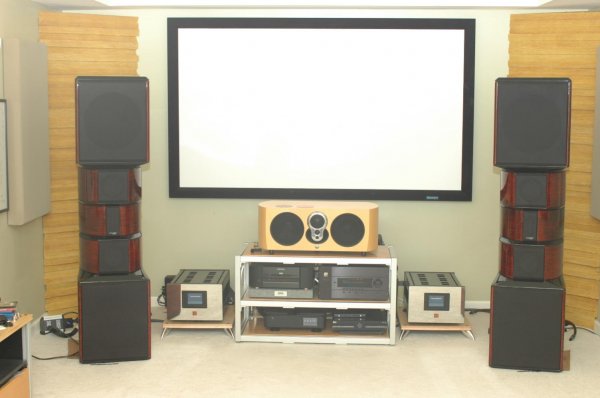
Then I remeasured:
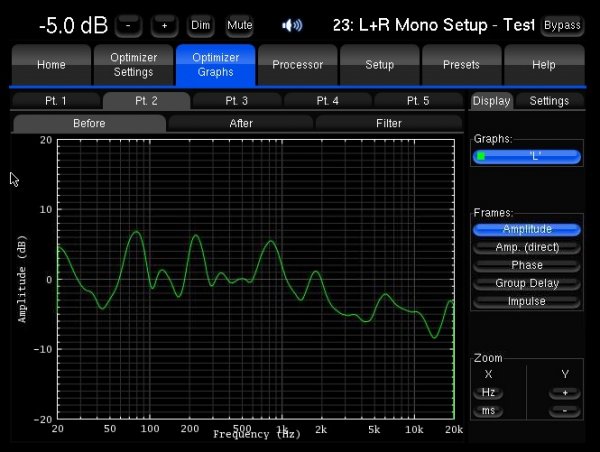
WOW, my 12 dB null is now 4 dB null! Easily correctable with DRC! My 3 dB peak has become a 7 dB peak, but keep in mind it had set the bass level on the spakers to + 6 dB. Very impressive. The entire low frequency response has been jacked up by 6-8 dB, all with a few hundred bucks worth of corning!
Finally, I did a regular calibration with the Trinnov, left and right channel separately, obviously with the traps in place. This is what i got:
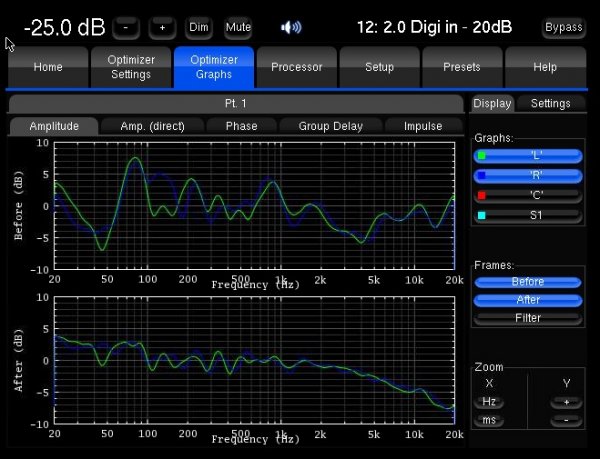
Without DRC, I am +/- 7 dB, and with correction I am +/- 3 dB. Note that the 5 dB boost between 20 - 100 Hz and the drop off in high frequency is actually my defined response curve. Note that I did not move my speakers at all thoughout any of this. I decided to keep them where they are (30" from sidewall, 60" from back wall) for practical / aesthetic reasons.
Bottom line, $350 and 2 hours well spend! More improvement than I would have ever imagined.
So I decided to do a little bass trapping expirement. First, I measured my room without bass traps. Next I left the entire measurement setup untouched, installed floor to bottom traps (an 8 feet stack of 24 x 24 x 34 triangular cut up corning 703 in each corner), and redid the measurement. The difference was so dramatic I first though I made a mistake in my setup. Doublechecked everything but the difference was real. I used the Trinnov for measurement. Since Trinnov only does one channel at a time, I split on channel with a Y-splitter and what shows at Left channel on the chart is actually left and right.
This chart is without the trap. I was a little shocked about the huge dip around 50Hz. Note that this was measured with only the botttom woofer on the Evolution Acoustics engaged.

Next, I dumped all this corning 703 in the corner (I will build a frame with fabric later):

Then I remeasured:

WOW, my 12 dB null is now 4 dB null! Easily correctable with DRC! My 3 dB peak has become a 7 dB peak, but keep in mind it had set the bass level on the spakers to + 6 dB. Very impressive. The entire low frequency response has been jacked up by 6-8 dB, all with a few hundred bucks worth of corning!
Finally, I did a regular calibration with the Trinnov, left and right channel separately, obviously with the traps in place. This is what i got:

Without DRC, I am +/- 7 dB, and with correction I am +/- 3 dB. Note that the 5 dB boost between 20 - 100 Hz and the drop off in high frequency is actually my defined response curve. Note that I did not move my speakers at all thoughout any of this. I decided to keep them where they are (30" from sidewall, 60" from back wall) for practical / aesthetic reasons.
Bottom line, $350 and 2 hours well spend! More improvement than I would have ever imagined.




